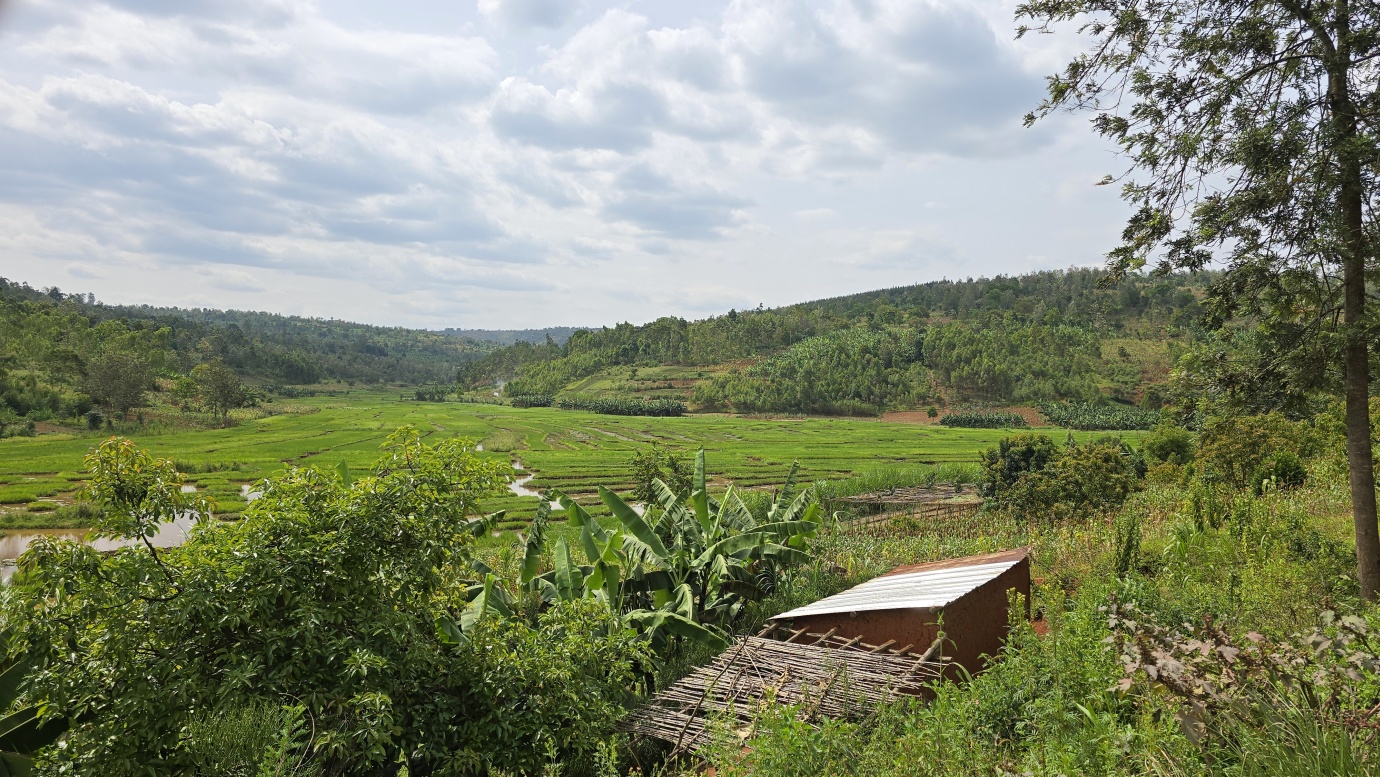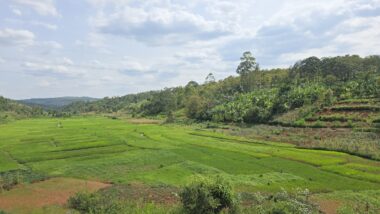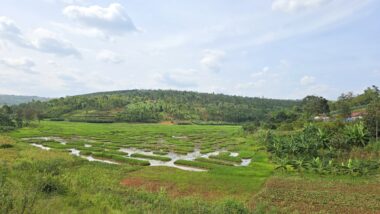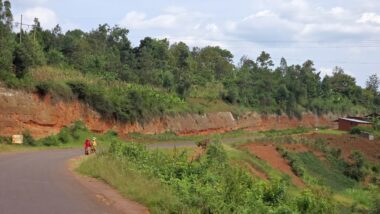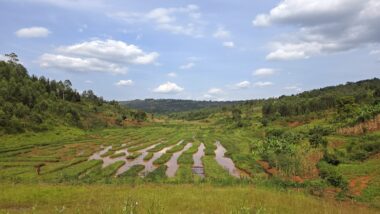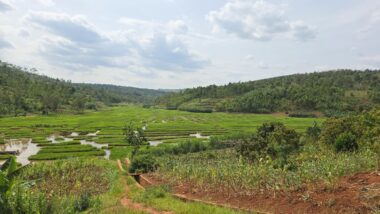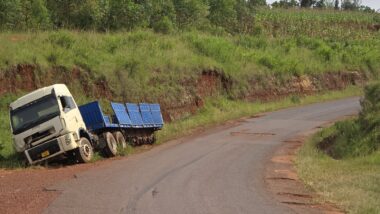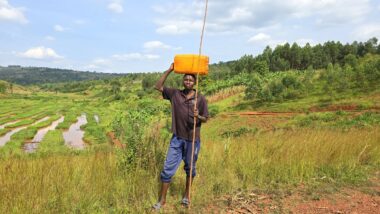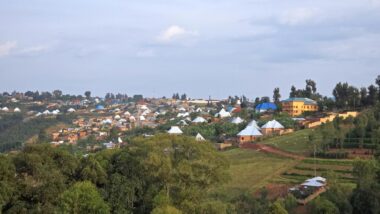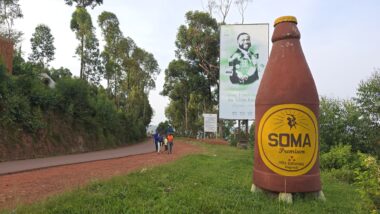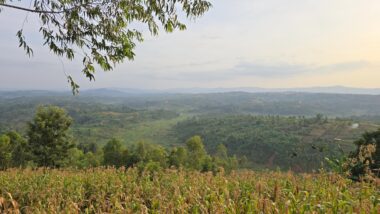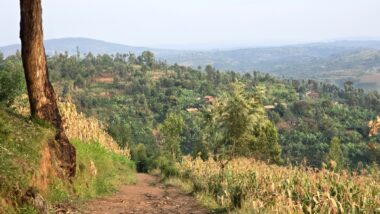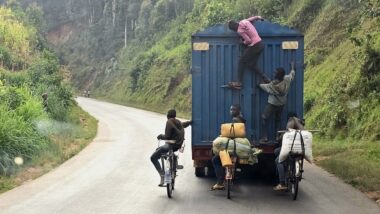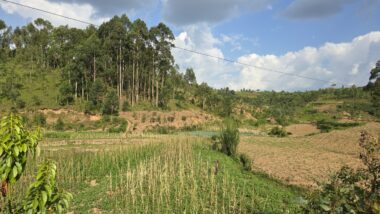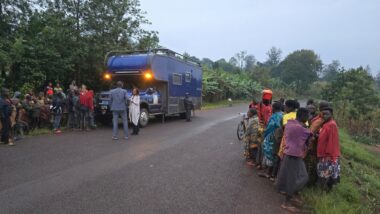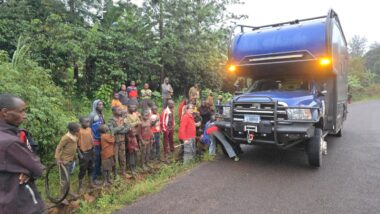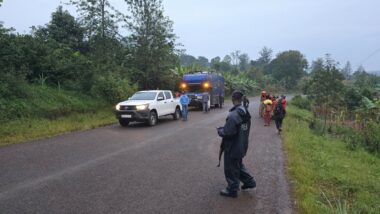A brick-colored dirt road contrasts with the surrounding nature of banana trees and rice crops. For the first time during our expedition, we had to strictly follow the itinerary and observe our diesel consumption because, for years, there has been no diesel supply in landlocked Burundi.
Even though it has one of the lowest per capita GDPs in the world, it has quite a good network of 22 national roads, with a length of 1952 km, when1647 km of them are paved. Most of the roads were built between the 1960s and 1990s. Natural disasters, especially landslides, the civil war that lasted nearly fifteen years, and the lack of maintenance have damaged the network. However, it’s still very much acceptable, and we saw ongoing maintenance in several regions.
Roads are expensive for the taxpayer. For example, only one km of the coated pavement of the Kirundo-Gasenyi section on the RN14 costs $466,111; for Muyinga-Cankuzo, one km is estimated at $5,553,387; the coated km of Nyanza Lake-Mabanda-Mugina on the RN3 is equivalent to $1,230,897.
It is one of the few African countries whose borders were not determined by colonial rulers. Most of Burundi’s population is Hutu, which is traditionally a farming population. Power, however, has long rested with the Tutsi minority, which historically has controlled the army and most of the economy, mainly the lucrative international export of coffee. Few fundamental cultural differences between the two peoples are distinguishable; both speak Rundi (Kirundi). Such linguistic homogeneity is rare in sub-Saharan Africa and emphasizes the historically close cultural and ethnic ties among the peoples in Burundi.
Even so, ethnic conflict between the Hutu and Tutsi has plagued the country since it gained independence from Belgium in 1962, at a significant cost in human life and property. Few Burundians escaped the ensuing anarchy into which the country was plunged when this interethnic violence flared anew in the 1990s, a bloody conflagration that well illustrated the Rundi proverb, “Do not call for lightning to strike down your enemies, for it also may strike down your friends.” Neither the presence of an international peacekeeping force beginning in the late 1990s nor the ratification of an agreement to share power between Hutu and Tutsi were immediately effective in curbing interethnic violence, which also spilled into the neighbouring countries of Rwanda and the Democratic Republic of the Congo. Burundians are now tasked with quelling ethnic dissent, promoting unity, and rebuilding the country.
Burundi was the scene of a civil and ethnic war, the result of years of tension between Hutus and Tutsis. The war lasted 12 years and resulted in 300,000 deaths. Although a 2006 agreement restored peace, Burundi experienced a new crisis in 2015 when its president pushed for a constitutional reform to allow him to run for a third term.
Fixing a flat tyre – near Muyinga


